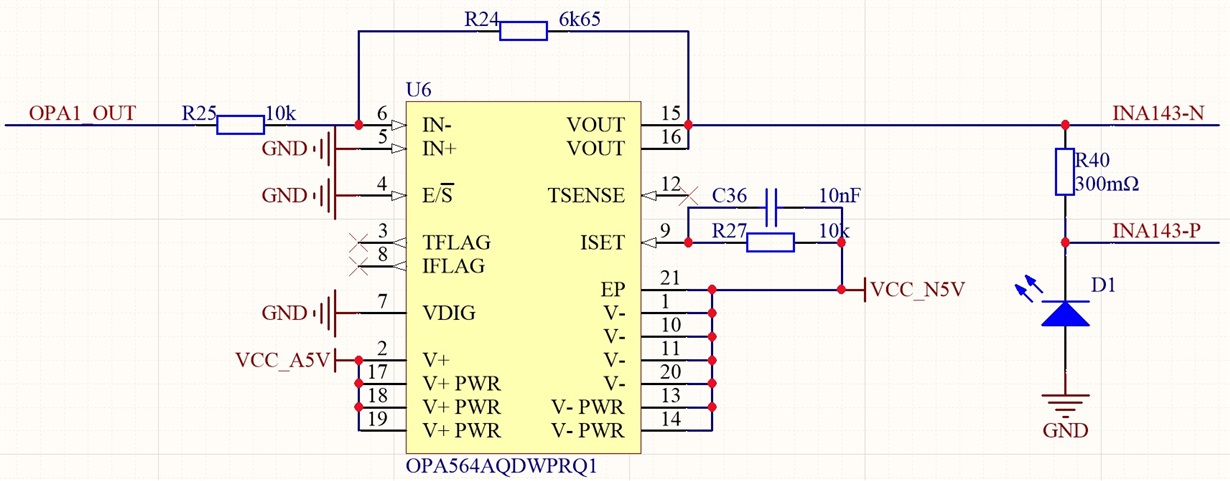Other Parts Discussed in Thread: OPA564
I use OPA564-Q1 as a constant current source to drive LD.
The OPA564-Q1 works fine,but when the OPA564-Q1 output voltage and current are -1.45V/680mA,The temperature of the OPA564-Q1 reached nearly 100 ℃。
The current output by the OPA564-Q1 changes from small to large, and the temperature increases linearly accordingly.
The package I use is PowerPAD on Bottom.During the OPA564-Q1 is working, I did’t add heat sink or fan.
I think the temperature is too high, what's the problem?
thanks!


